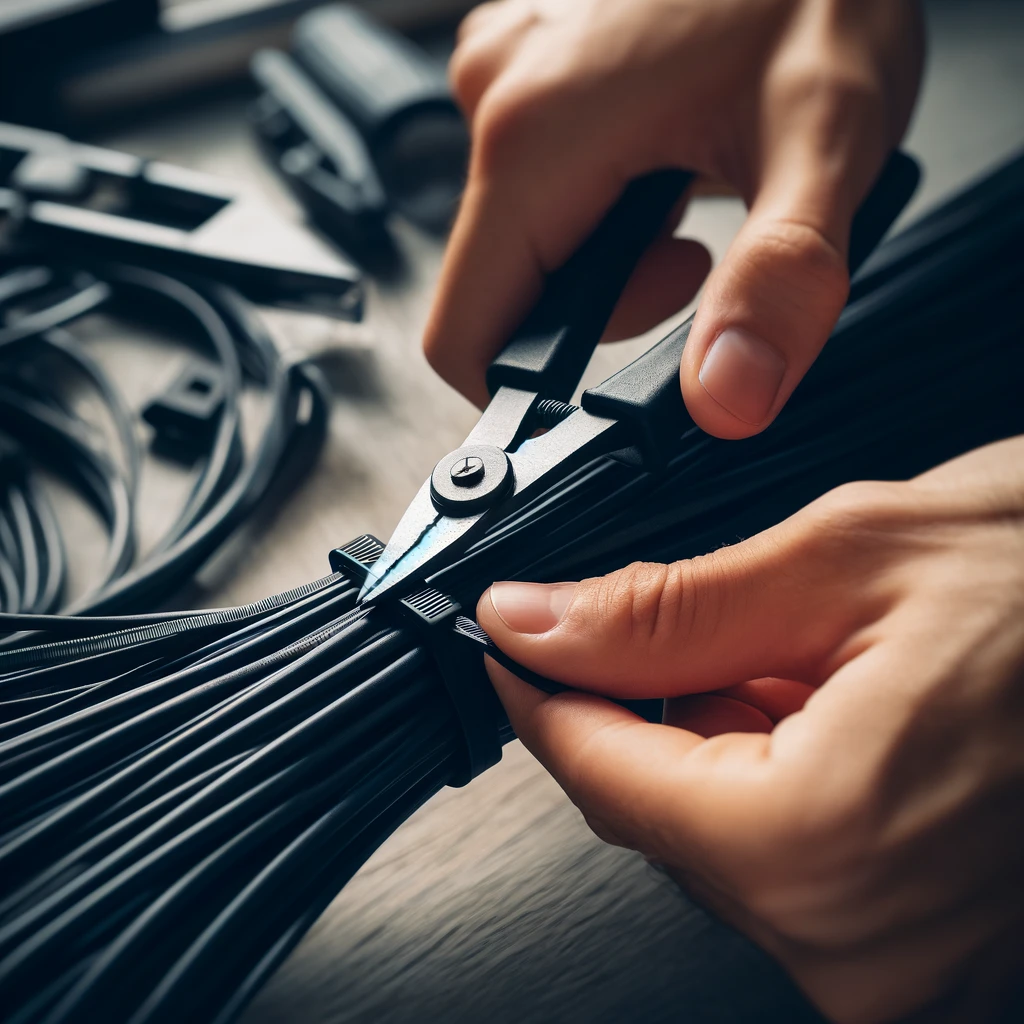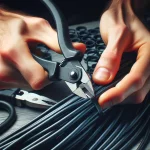Cable ties are versatile and essential tools for organizing and securing wires, cables, and other objects. They come in various sizes, colors, and materials to suit different applications. When using cable ties, one common question arises: should you cut the excess ends, and if so, what are the best tips for doing it?
In this blog post, we'll explore the reasons for cutting cable tie ends and provide practical tips to help you achieve a neat and professional finish. We'll also discuss the potential risks and benefits of leaving the ends uncut in certain situations. By the end of this article, you'll have a better understanding of how to handle excess cable tie ends effectively.
Why Cut the Excess Ends of Cable Ties?
Cutting the excess ends of cable ties is a common practice for several reasons. First and foremost, it enhances the overall appearance of your cable management. Trimmed ends create a cleaner and more professional look, especially in visible areas where aesthetics matter.
Moreover, removing the excess length can prevent potential hazards. Long, protruding ends can snag on clothing, skin, or other objects, causing injuries or damage. In applications where space is limited, such as in tight enclosures or moving parts, cutting the ends reduces the risk of interference and ensures proper functioning.
Tips for Cutting Cable Tie Ends Safely and Efficiently
When it comes to cutting cable tie ends, there are several tips to keep in mind for a safe and efficient process. Always use a sharp, dedicated cable tie cutter or flush cutter. These tools are designed to create a clean, flush cut without leaving sharp edges that could cause injuries.
Position the cutter as close to the locking mechanism as possible, leaving a minimal amount of excess material. This ensures a secure hold while minimizing the remaining stub. Apply firm, controlled pressure when cutting to avoid slippage and achieve a precise cut in one smooth motion.
When to Leave Cable Tie Ends Uncut
While cutting cable tie ends is generally recommended, there are situations where leaving them uncut may be preferable. In applications where the ties are subject to high stress or vibration, leaving a slightly longer end can provide additional strength and stability to the fastening.
In some cases, the excess length can be tucked away or hidden behind the bundled wires or objects, eliminating the need for cutting. This approach saves time and effort, especially when dealing with a large number of cable ties in hard-to-reach areas.
When to Cut or Leave Cable Tie Ends: A Comprehensive Guide
Cable ties are essential tools for organizing and securing wires, cables, and other objects. One common question that arises when using cable ties is whether to cut the excess ends or leave them uncut. In this blog post, we'll explore various scenarios and provide a numbered list of examples to help you make informed decisions.
Examples of When to Cut Cable Tie Ends

- Visible areas: Cut cable tie ends in visible areas to maintain a clean and professional appearance. This is particularly important in settings such as offices, data centers, or any place where aesthetics matter.
- Tight spaces: Trim the ends when working in tight spaces, such as inside equipment enclosures or near moving parts. This prevents the excess length from interfering with the proper functioning of the components.
- Safety concerns: Remove excess length when there's a risk of snagging or injury. For example, if the ties are used in areas where people frequently pass by or work, cutting the ends reduces the likelihood of accidents.
- Compliance with regulations: Some industries have specific regulations regarding cable management. Cutting cable tie ends may be necessary to comply with these standards and ensure a safe working environment.
- Precision applications: In certain applications, such as in the aerospace or medical industries, precise cable management is crucial. Cutting the ends ensures a neat and accurate installation.
Examples of When to Leave Cable Tie Ends Uncut
- High stress or vibration: Leave cable tie ends uncut when they are subject to high stress or vibration. The extra length provides additional strength and stability to the fastening, reducing the risk of the tie coming loose.
- Hidden areas: Skip cutting when the excess length can be tucked away or hidden behind the bundled wires or objects. This saves time and effort, especially when dealing with numerous ties in concealed locations.
- Temporary installations: If the zip ties are being used for a temporary setup or will be removed in the near future, leaving the ends uncut can make the removal process easier and faster.
- Large-scale projects: In projects involving a large number of zip ties, leaving the ends uncut can significantly reduce the time and labor required for installation. This is particularly relevant in industrial settings or construction projects.
- Adjustable ties: Some zip ties are designed to be adjustable, allowing for future tightening or loosening. In these cases, leaving the ends uncut facilitates easy adjustment without the need for replacement.
Conclusion
Cutting the excess ends of cable ties is a simple yet important step in achieving neat and safe cable management. By following the tips outlined in this blog post, you can ensure a professional finish while minimizing potential hazards. Remember to use the right tools, apply proper techniques, and consider the specific requirements of your application.
Whether you're a professional electrician, IT technician, or DIY enthusiast, mastering the art of cutting cable tie ends will elevate your projects to the next level. Experiment with different methods and find the approach that works best for you. Happy cable tying!
Check out our extensive collection of cable ties for all purposes at Cable Ties Unlimited.

